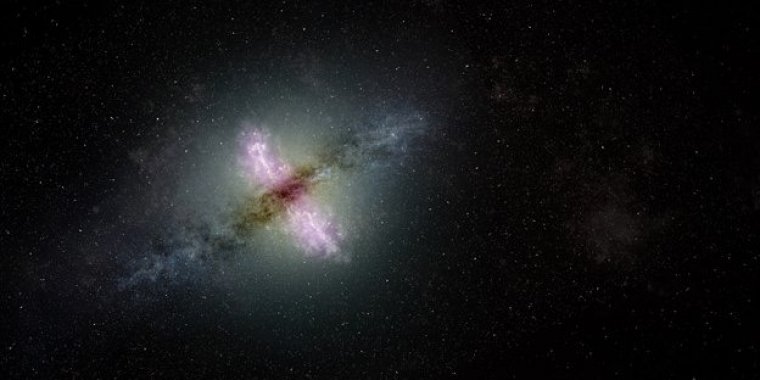| News / Space News |
Sky survey reveals newborn jets in distant galaxies
Astronomers using data from the ongoing VLA Sky Survey have found distant galaxies with supermassive black holes at their cores that have launched powerful, radio-emitting jets of material within the past two decades or so.

Artist's conception of a galaxy propelling jets of material outward from the galaxy's center. Photo: Sophia Dagnello, NRAO/AUI/NSF
The scientists compared data from VLASS with data from an earlier survey that also used the U.S. National Science Foundation Karl G. Jansky Very Large Array.
"We found galaxies that showed no evidence of jets before but now show clear indications of having young, compact jets," said Kristina Nyland at the Naval Research Laboratory.
"Jets like these can strongly affect the growth and evolution of their galaxies, but we still don't understand all the details. Catching newborn jets with surveys like VLASS provides a measure of the role of powerful radio jets in shaping the lives of the galaxies over billions of years."
VLASS is a project that will survey the sky visible from the VLA -- about 80% of the entire sky -- three times over seven years. The observations began in 2017 and the first of the three scans is now complete.
Nyland and her colleagues compared data from this scan with data from the FIRST survey that used the VLA to observe a smaller portion of the sky between 1993 and 2011.
They found about 2,000 objects that appear in the VLASS images but were not detected in the earlier FIRST survey. From these, they selected 26 objects that were previously categorized as galaxies powered by supermassive black holes. They chose 14 of the galaxies for more detailed observations with the VLA.
The black holes at the cores of galaxies are known to interact with the galaxies themselves, and the two evolve together. The jets launched from the regions near the black holes can affect the amount of star formation within the galaxy. (National Science Foundation)
YOU MAY ALSO LIKE





